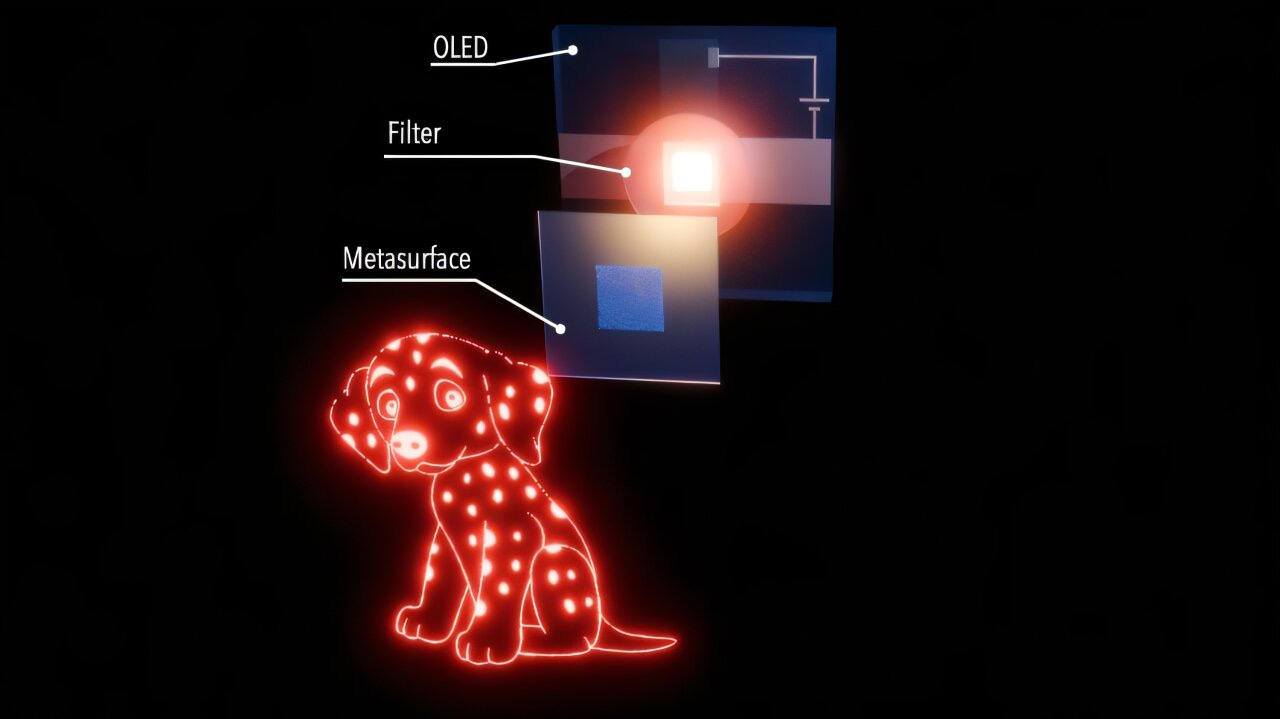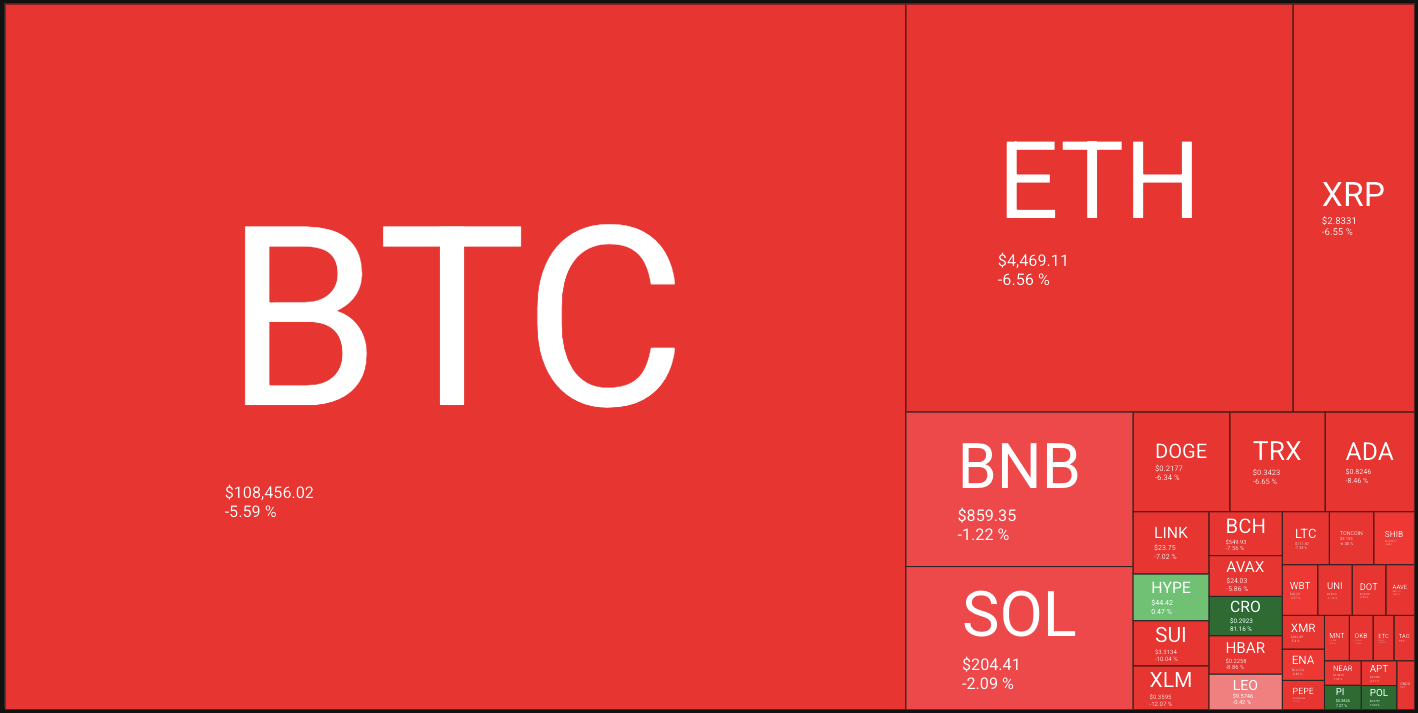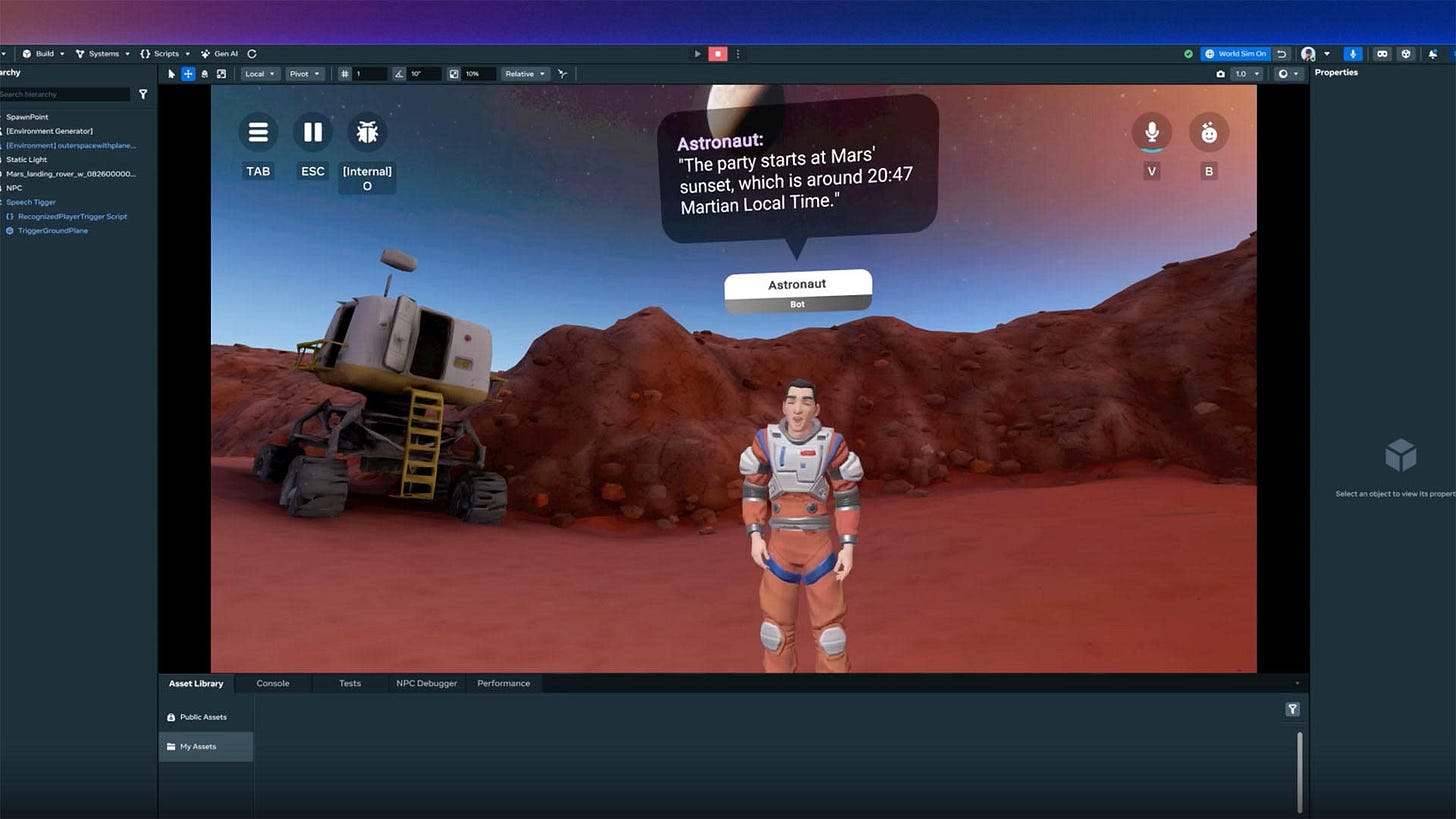Weekly Journal: Holograms Get an Upgrade
[6 min read] Your weekend guide to getting ahead on the digital frontier. Beyond head-worn displays toward ambient, holographic environments—where spatial computing becomes a natural experience

Welcome to this week’s Weekly Journal 📔, your guide to the latest news & innovation in emerging technology, digital assets, and our exciting path to the Metaverse. This is week 143 of the 520 weeks of newsletters I have committed to, a decade of documenting our physical and digital lives converge. New subscribers are encouraged to check out the history & purpose of this newsletter as well as the archive.
- Ryan
🌐 Digital Assets Market Update
To me, the Metaverse is the convergence of physical & virtual lives. As we work, play and socialise in virtual worlds, we need virtual currencies & assets. These have now reached mainstream finance as a defined asset class:
🔥🗺️Heat map shows the 7 day change in price (red down, green up) and block size is market cap.
🎭 Crypto Fear and Greed Index is an insight into the underlying psychological forces that drives the market’s volatility. Sentiment reveals itself across various channels—from social media activity to Google search trends—and when analysed alongside market data, these signals provide meaningful insight into the prevailing investment climate. The Fear & Greed Index aggregates these inputs, assigning weighted value to each, and distils them into a single, unified score.
🗞️ Metaverse news from this week:
Amazon and Walmart are preparing to launch their own USD-backed stablecoins, a move that could reshape U.S. payments by targeting the $143 billion merchants currently pay in interchange fees to banks.
Last year, U.S. businesses spent more than $220 billion in card-acceptance costs, with the majority—around $143 billion—flowing to issuing banks through interchange fees. By issuing programmable dollars directly, Amazon and Walmart aim to cut out the banking layer, enable real-time on-chain settlement, and gain tighter control over cash flows. The strategy does not seek to dismantle Visa or Mastercard, but rather to bypass the bank-funded rewards model that underpins today’s card ecosystem.
The timing aligns with new regulatory clarity. The recently passed GENIUS Act creates a federal framework for stablecoin issuance, mandating 1:1 reserves, monthly audits, and AML compliance. This has opened the door for both fintechs and large corporates to enter the space, joining players like Ripple (with RLUSD) and JPMorgan (with JPMD). Analysts argue Amazon and Walmart’s entry could accelerate mainstream adoption, transforming them from retailers into financial platforms in their own right.
Metaverse lens: Stablecoins are no longer confined to crypto trading—they are becoming the plumbing of digital economies. If Amazon and Walmart succeed, programmable dollars could power not just physical retail, but also immersive commerce inside virtual environments, linking payments seamlessly across e-commerce, in-store, and metaverse marketplaces.
Researchers at the University of St Andrews have unveiled a breakthrough that could bring holograms to smartphones and other everyday devices.
The team combined organic light-emitting diodes (OLEDs)—already widely used in phone and TV displays—with holographic metasurfaces (HMs), ultra-thin arrays of nano-structures that can precisely shape light. This marks the first time both technologies have been integrated, creating the basic building block of a holographic display.
Traditionally, holograms require bulky lasers and complex setups. By contrast, the OLED–HM combination offers a compact, scalable, and potentially low-cost method for projecting holograms. Researchers showed that a single OLED pixel, when paired with a metasurface, can project a full image—dramatically reducing the pixel count usually required. The work, published in Light: Science & Applications, could accelerate applications across communications, biophotonics, gaming, security, and next-generation displays.
Metaverse lens: This advance points toward a future where holographic visuals move out of research labs and into the devices we carry every day. Miniaturised hologram displays could replace flat screens, enabling true three-dimensional interfaces in mobile phones, AR glasses, and XR headsets. For the metaverse, it suggests a path beyond head-worn displays toward ambient, holographic environments—where spatial computing becomes a natural extension of physical space.
📖 Read of the week:
I wanted to highlight an excellent article from Janey Park:
🏀 Why the NBA Store’s VR Pop-Up Might Be the Future of Luxury Retail
Meta x WNBA just did what most fashion brands still can’t: make retail feel like real life and not a rendering.
TL;DR: For one day, the NBA Store in NYC became the first-ever WNBA store, powered by Meta Quest. Think: VR courtside, Pop-A-Shot with creators, and limited merch drops. It was All-Star Weekend meets IRL content engine.
🌶️ Hot Take: Sports brands are doing experiential retail better than fashion. Where’s the Fendi x Fandom pop-up? The LVMH Quest headset collab?
🧠 Marketing Playbook:
🏛️ Spin this into a touring experience at key WNBA markets
💄 Collab with wellness and beauty brands to expand the experience
🎨 Reward fans with digital exclusives (filters, merch, behind-the-scenes)
🎥 Watch of the week: Delaying the Inevitable
Lynette Zang is a polarising figure but overall I agree with her take in this video. Stablecoins should be for reducing friction in payments and trade, and for accessing DeFi. Bitcoin, gold, and yield producing assets are the long term hold.
Pegged to govt printed fiat dollars, they only delay the inevitable loss of wealth tied to fiat. Around the world in developing counries, people are fleeing collapsing local currencies into USD stablecoins, but that “illusion of safety” won’t last. In this video, Lynette exposes the stablecoin trap and explains how sound money like gold and silver protect your purchasing power.
AI Spotlight 🎨🤖🎵✍🏼: "Meta is Bringing AI-Powered NPCs to the Metaverse"
In the Metaverse, AI will be critical for creating intelligent virtual environments and avatars that can understand and respond to users with human-like cognition and natural interactions.
Why it matters:
🎭 Beyond Scripts: NPCs won’t just repeat pre-set lines. They’ll be able to engage in dynamic voice conversations, adapting to player actions in real time.
🛠️ Creator Control: Developers can define each character’s appearance, backstory, and personality using Meta’s Worlds Desktop Editor.
🌍 World-Building Boost: These AI-driven NPCs could make Horizon Worlds more interactive, immersive, and persistent—critical steps in keeping players engaged.
🤝 AI + Metaverse Convergence: The move reflects Meta’s broader ambition to fuse generative AI with its metaverse strategy, a theme likely to be expanded at the upcoming Meta Connect event.
Early examples are already live in games like Bobber Bay Fishing and Profit or Perish. If successful, AI NPCs may become the glue that transforms Horizon Worlds from static environments into living, breathing digital societies.
Meta is allowing developers to create LLM-powered NPCs for Horizon Worlds.
That’s all for this week! If you have any organisations in mind that could benefit from keynotes about emerging technology, be sure to reach out. Public speaking is one of many services I offer.





